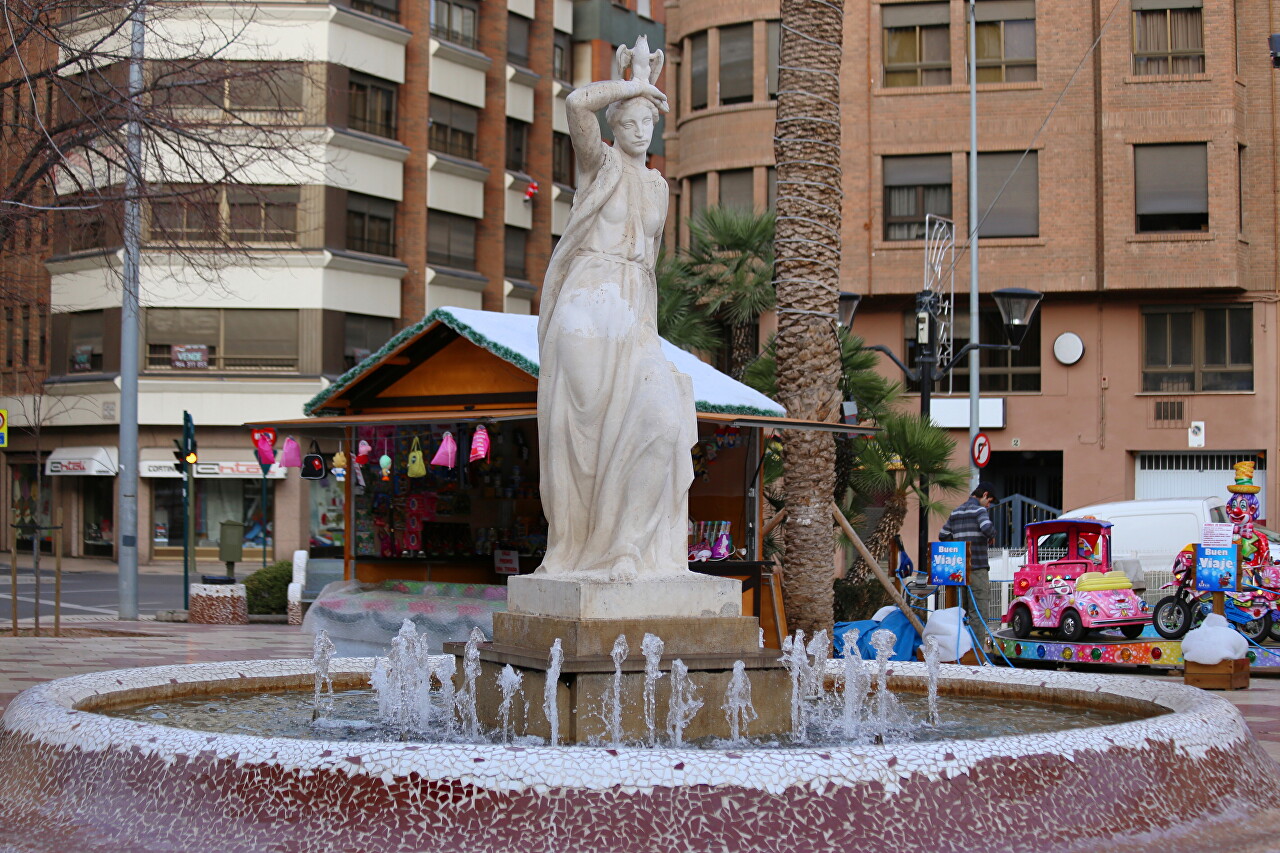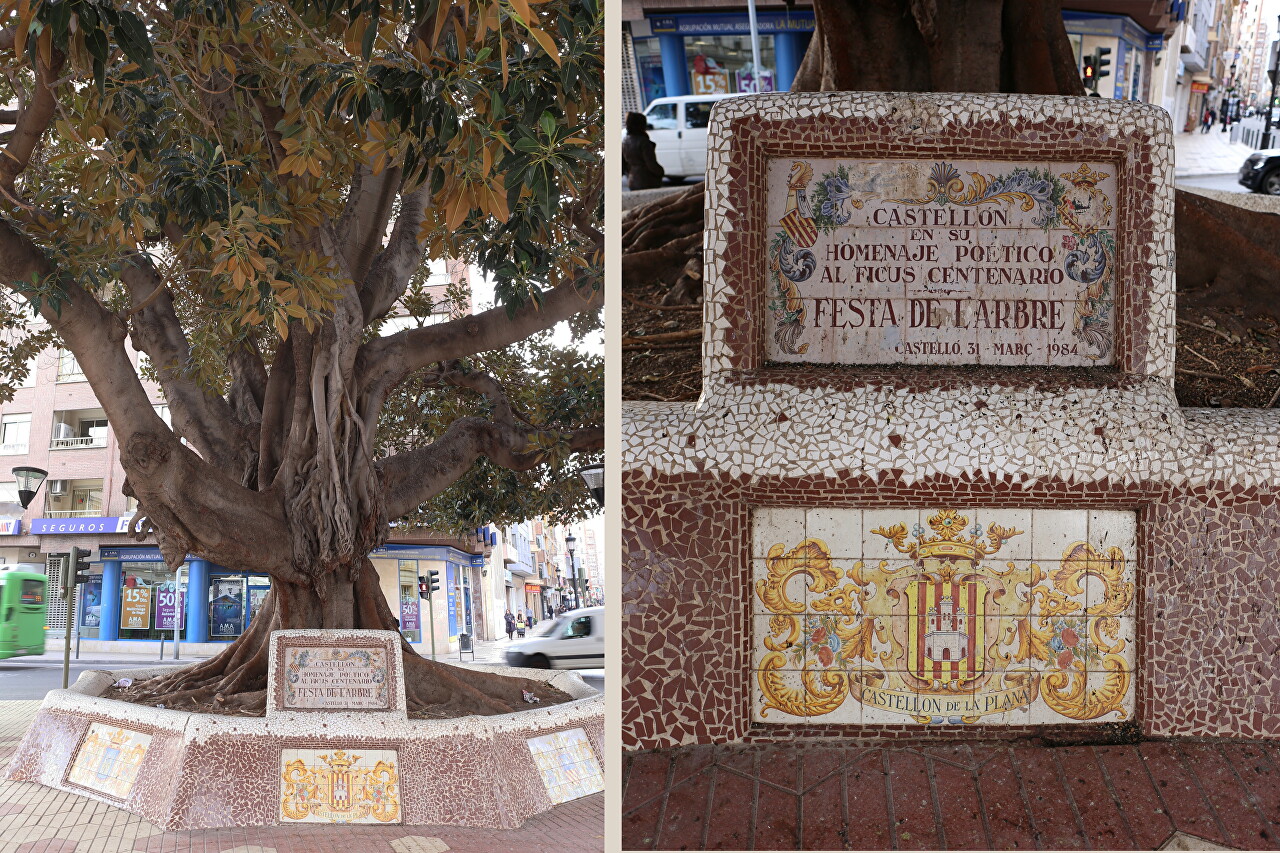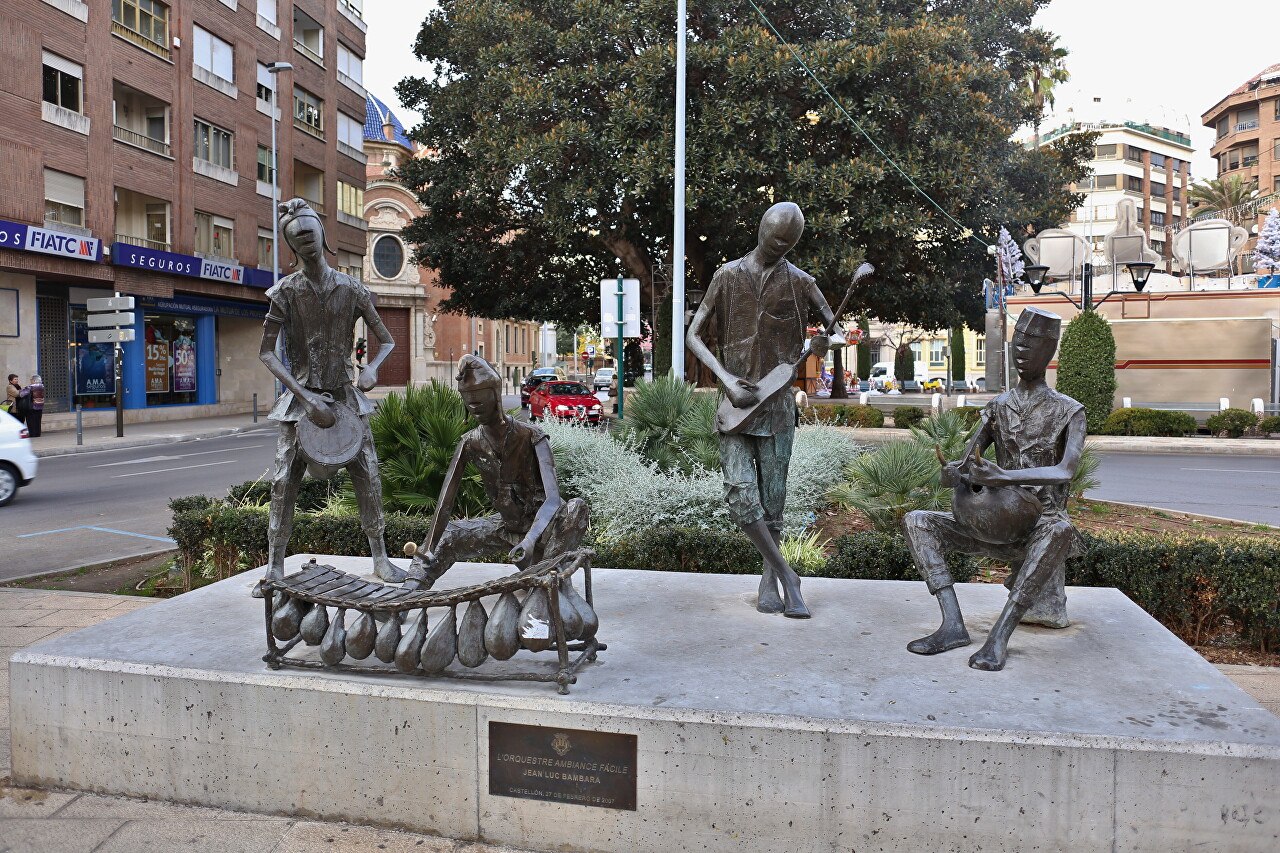Plaza María Agustina, Castellon de La Plana
Plaza Maria Agustina is located north of the city center. The history of this square is interesting: in 1886, during the economic crisis, the city council decided to implement a number of projects to provide employment for citizens who were left without work. Under this program, the city cemetery was moved outside the city limits, and Ribalta Park was built in its place, and the problem of the congested intersection known as "Toll" (can be translated as "loss"), where a dozen streets converged, was solved. This intricate transport hub became the square with the roundabout, which received its real name. Naturally, it turned out that the movement around the square was carried out in a clockwise direction. When horse-drawn vehicles were replaced by cars, the direction of travel was preserved, and for a long time it was the only roundabout in Europe with the wrong direction of travel. Only in 2004, it was decided to break the tradition, and on the night of November 24, the direction of traffic was changed. At the center of the square is a fountain decorated with a sculpture of the Virgin of La Paz by Juan B. Adsuara. The statue was erected in 1967, on the occasion of the 25th anniversary of the end of the Spanish Civil War. Initially, it was planned to erect a monument to Generalissimo Franco, also by Adusar, on this site, but the City Council decided that this event should be better marked by installing a statue of the Holy Virgin crowned with a dove, a universal symbol of peace.

The main attraction of the square is the huge Ficus centenario. The gigantic size suggests its centuries-old history, but it was planted by historical standards only recently, in 1930. Now the height of the tree exceeds 18 meters, and the trunk diameter is 4.5 meters. The base of the tree is surrounded by a border with ceramic coats of arms of Castellon and other cities in the province.

On the eastern corner of the square, you can see the sculpture composition L'orquestre Ambiance Facile, which can be translated as "Orchestra of a relaxed atmosphere", by artist Jean Luc Bambara, opened in 2007. An African sculptor has depicted a real-life musical group from Burkina Faso.
